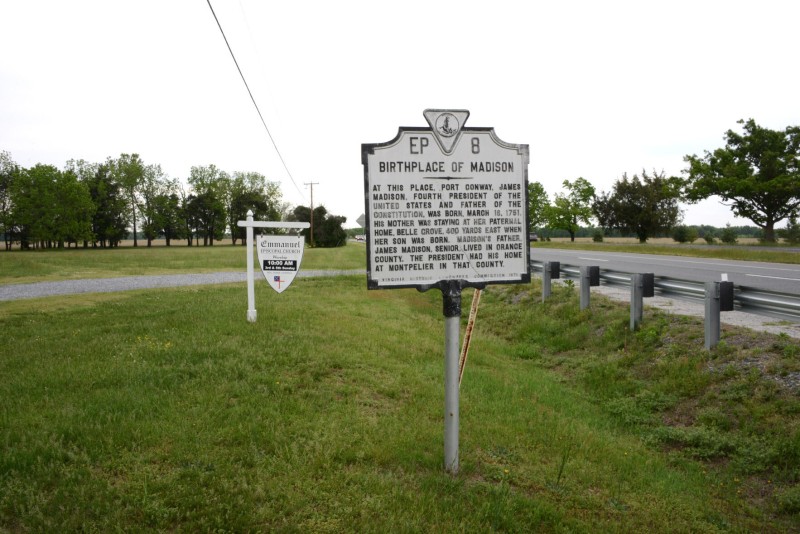
James Madison was born in 1751 at Belle Grove Plantation, while his parents were visiting his mother’s parents.

In the 1930s, after Depression-era neglect, the house was destroyed when it fell into the Rappahannock River. The current plantation built on the site is now a B&B.
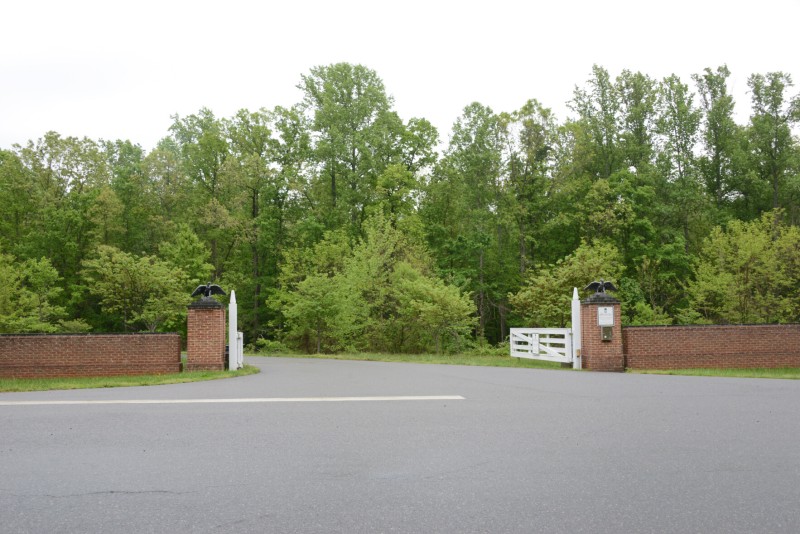
After Madison’s birth, his parents returned to their plantation in Orange, Virginia, where Madison lived most of his life, and where he is buried.
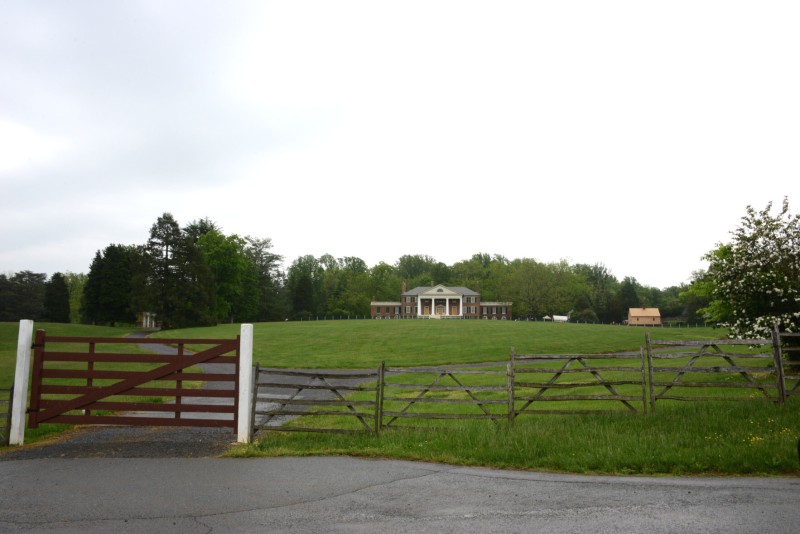
Madison was the first born son of a family with a total of twelve children, and his parents built a new house for their large family.

The house, called Montpelier, was expanded over the following two decades into one of the largest houses in the county.
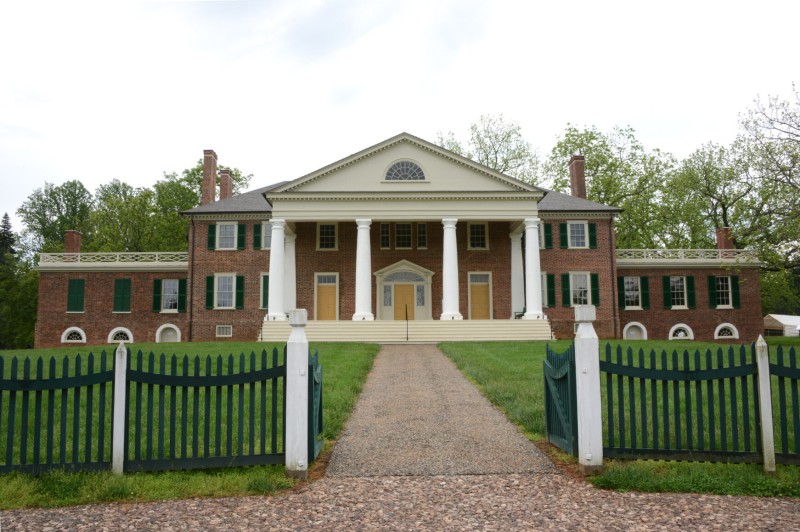
James Madison took over the property after his father died in 1801, and brought his new wife Dolley to live at Montpelier.

Known as the father of the Constitution and author of the Bill of Rights, Madison was Secretary of State during the Louisiana Purchase, and served two terms as president. He retired to Montpelier in 1817, and died there in 1836.

Dolley sold the estate in 1844, and moved to Washington DC. Montpelier was purchased in 1901 by William and Annie DuPont, who more than doubled its size, from 22 to 55 rooms.

In 1928 the house went to their daughter, Marion DuPont Scott, who developed it into a horse property, with two race tracks in its expansive lawns and fields. Today it remains a home for retired racehorses.
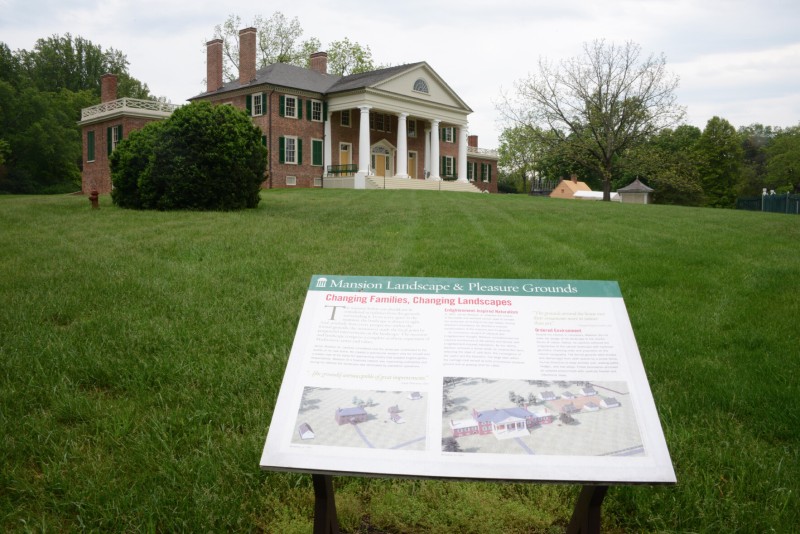
Montpelier has been open to the public since 1987, and is managed by the Montpelier Foundation, which began work in 2001 to return it to the condition it was in during Madison’s time.
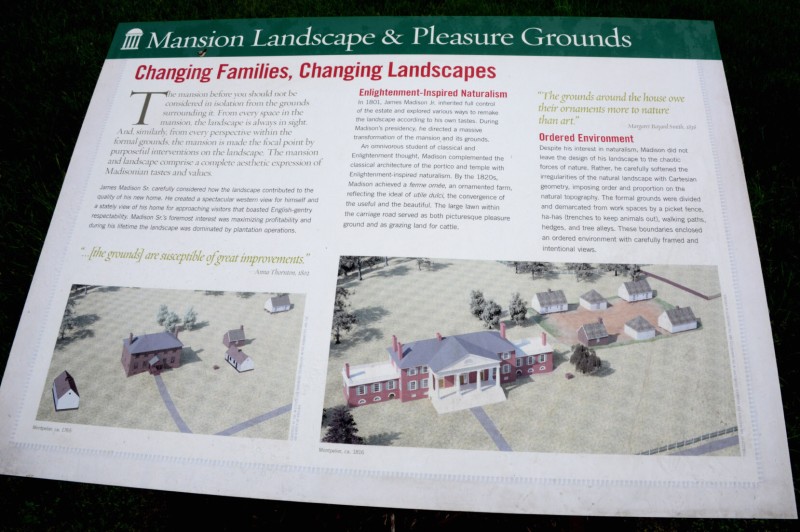
This was initially a work of deconstruction, removing the additions built by the DuPonts.

Years of detailed reconstruction followed. The major restoration work was completed in 2008.

Modern systems for temperature, humidity, fire suppression, and security are concealed in the brick walls and chimneys, and controlled from an underground vault.

An unusual gazebo, placed over a 23 foot-deep ice storage well, similar to a monopteron designed by Thomas Jefferson, is known as Mr. Madison’s Temple, and has become the symbol for Montpelier.
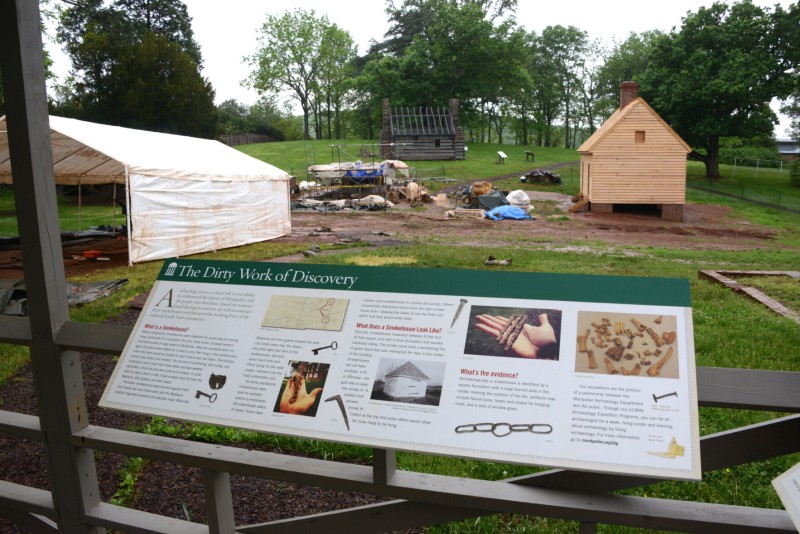
Archeology and reconstruction of the slave quarters and workshops is ongoing.

The Montpelier visitor center has an introductory film, a gift shop and restaurant, and galleries showing artifacts from the DuPont period.
